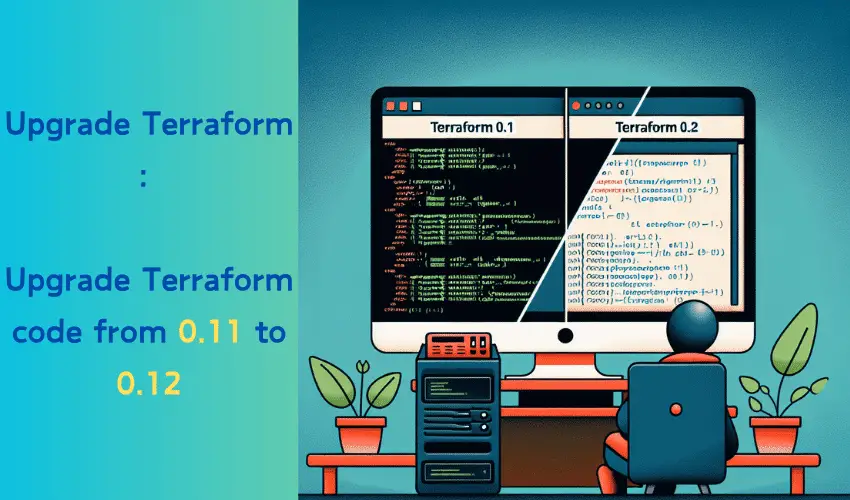Upgrading Terraform code from version 0.11 to 0.12 can be a daunting task for DevOps teams and cloud engineers looking to leverage the latest features and improvements in Terraform.
In this comprehensive guide, we will walk you through the steps to update your Terraform code from version 0.11 to 0.12, provide code examples, and highlight the key differences between the two versions.
Also Read: Easiest guide to install Terraform on Windows, Linux & MacOS
Steps by Step Guide
Step 1: Prepare Your Environment
Before embarking on the Terraform upgrade process, it's essential to ensure that your environment is prepared. Back up your existing Terraform code and state files to prevent any data loss. Utilizing version control systems like Git can help you track changes and easily revert if necessary. This preparation step is crucial for a smooth Terraform migration.
Step 2: Install Terraform 0.12
To upgrade to Terraform 0.12, you need to install the latest version of Terraform. You can download it from the official Terraform website or use a package manager like Homebrew or Chocolatey. This step is vital for accessing the new features and improvements in Terraform 0.12.
Step 3: Run terraform 0.12upgrade
Terraform 0.12 includes a handy command terraform 0.12upgrade that automatically updates your existing Terraform code to be compatible with version 0.12. Navigate to your Terraform project directory and execute:
terraform 0.12upgradeThis command will modify your configuration files and provide a report of the changes made, facilitating a seamless transition to the new version.
Code Examples:
To better understand the differences between Terraform 0.11 and 0.12, let's examine some code examples.
Example 1: Interpolation Syntax
Terraform 0.11:
resource "aws_instance" "example" {
ami = "${var.ami_id}"
instance_type = "t2.micro"
}Terraform 0.12:
resource "aws_instance" "example" {
ami = var.ami_id
instance_type = "t2.micro"
}In Terraform 0.12, the interpolation syntax has been simplified. You no longer need to wrap variables in ${} when they are used as standalone arguments, making the code cleaner and easier to read.
Example 2: Conditional Expressions
Terraform 0.11:
variable "env" {
default = "dev"
}
resource "aws_instance" "example" {
count = "${var.env == "prod" ? 2 : 1}"
ami = var.ami_id
instance_type = "t2.micro"
}Terraform 0.12:
variable "env" {
default = "dev"
}
resource "aws_instance" "example" {
count = var.env == "prod" ? 2 : 1
ami = var.ami_id
instance_type = "t2.micro"
}In Terraform 0.12, the conditional expressions have been simplified and no longer require quotation marks or the ${} syntax, enhancing code readability and maintainability.
Step 4: Test and Validate
After running the terraform 0.12upgrade command and reviewing the changes, it's crucial to test and validate your updated Terraform code. Execute terraform plan to review the proposed changes and ensure that everything functions as expected. This validation step is key to a successful Terraform upgrade.
Step 5: Commit and Deploy
Once you have tested and validated your updated Terraform code, commit the changes to your version control system and deploy them to your environment. This final step ensures that your infrastructure is managed with the latest version of Terraform, taking advantage of new features and improvements.
In conclusion, upgrading Terraform code from version 0.11 to 0.12 involves preparing your environment, installing the latest version, using the terraform 0.12upgrade command, and thoroughly testing and validating the changes. By understanding the key differences in syntax and features between the two versions, you can ensure a smooth and successful upgrade process, keeping your infrastructure management at the cutting edge.
We are giving you exclusive deals to try Linux Servers for free with 100$ credit, check these links to claim your 100$,
DigitalOcean - 100$ free credit & Linode - 100$ free credit
Check some Exclusive Deals, HERE.
Also, check out DevOps Book You should read section.
